Toxic Beauty: 3 Poisonous Painters’ Pigments
Did you know that some of the most admired painters’ pigments in art history are also among the most toxic? The pursuit of beauty has sometimes...
Celia Leiva Otto 8 December 2025
Did you ever think where the ideas for Pokémon could be coming from? Here are six examples proving that in the 16th century, Hieronymus Bosch caught ’em all and put them in his works, including the magnificent Garden of Earthly Delights from the Prado Museum in Madrid. See all the Pokémon that could be Bosch’s creatures!
Lugia is an immense, draconian, mythical Pokémon with avian qualities. Known as the Guardian of the Seas, Lugia is tremendously intelligent and is very gentle with the life around it, despite its colossal size. Here it yawns and is a bit overweight.
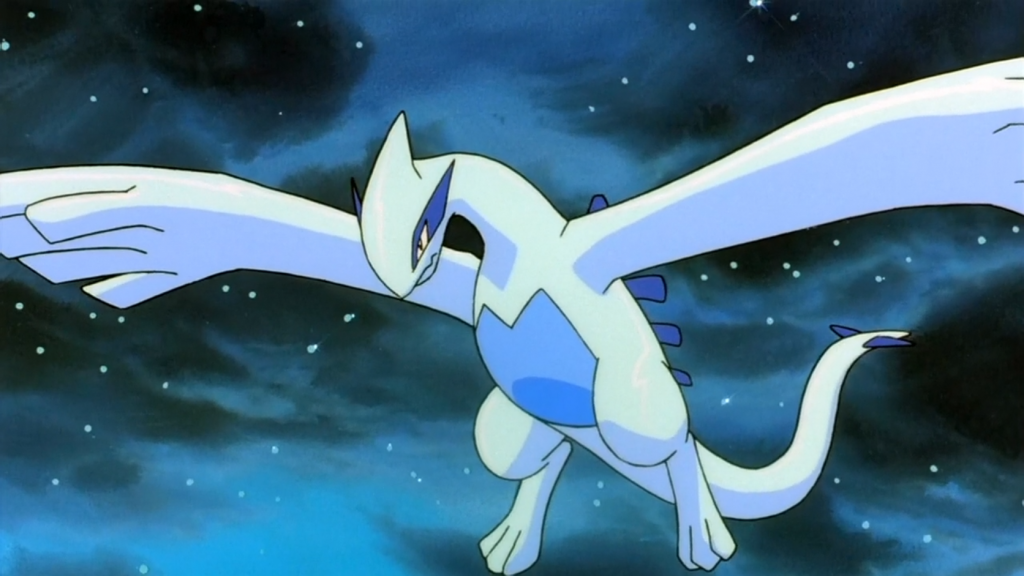
Lugia. Pokeserwis.
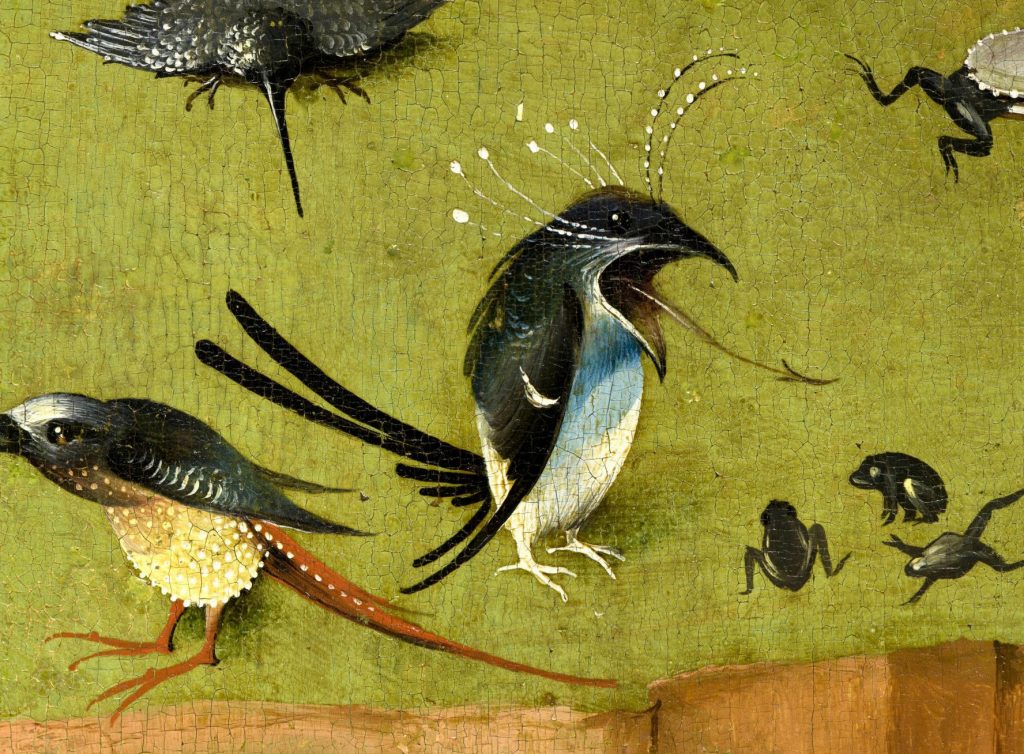
Pokémon & Bosch: Hieronymus Bosch, The Garden of Earthly Delights, 1490–1500, Museo Nacional del Prado, Madrid, Spain. Detail.
Spheal is a chubby, spherical, seal-like Pokémon with a short, flat tail. Although here painted in a sad mood, when happy or cheerful, for example when eating in a group, this Pokémon will clap its fins.

Spheal. Pokemon.
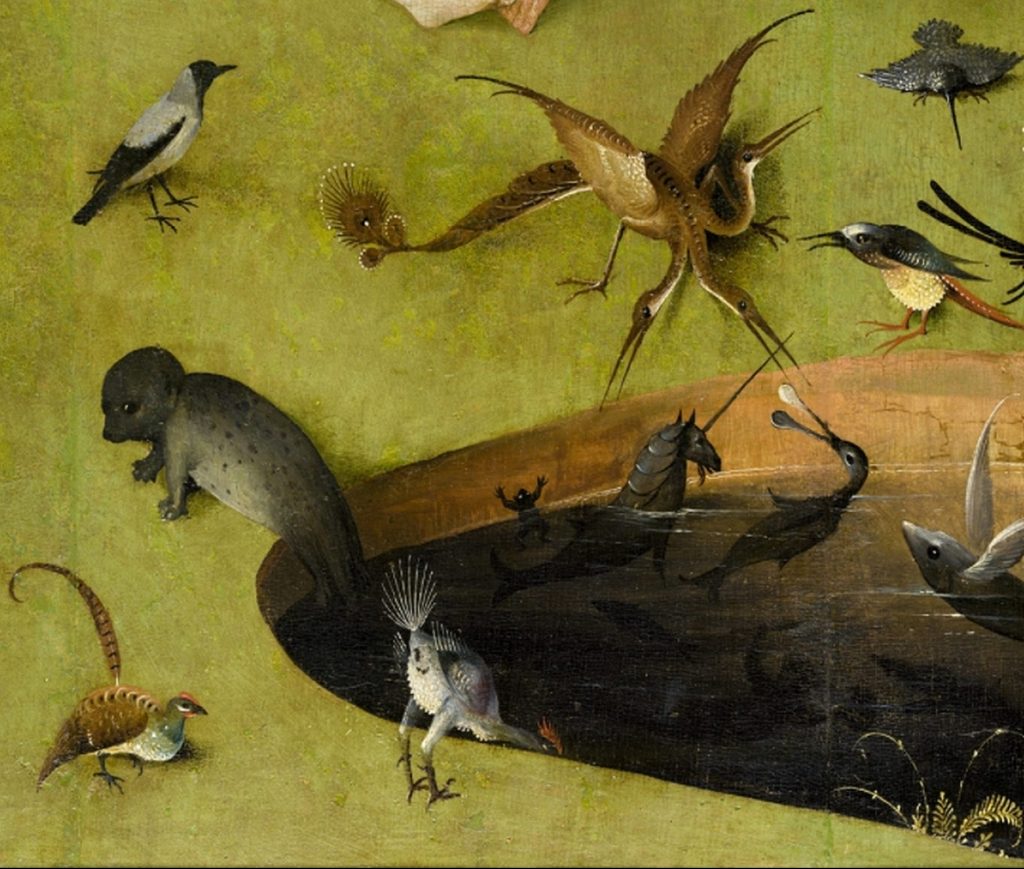
Pokémon & Bosch: Hieronymus Bosch, The Garden of Earthly Delights, 1490–1500, Museo Nacional del Prado, Madrid, Spain. Detail.
Shaymin is a small hedgehog-like Pokémon, and the smallest mythical Pokémon to date. It is so small that it was even caught in a glass bowl by a group of random people (probably the 16th-century fans of the game).
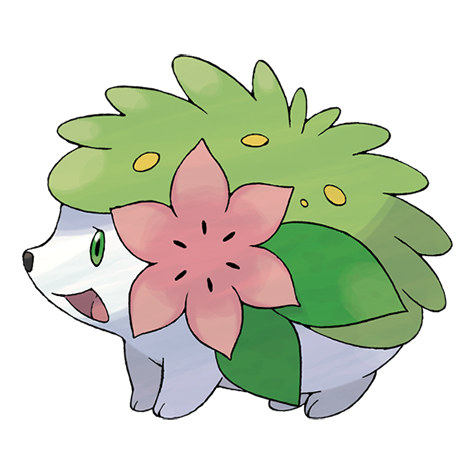
Shaymin. Pokemon.
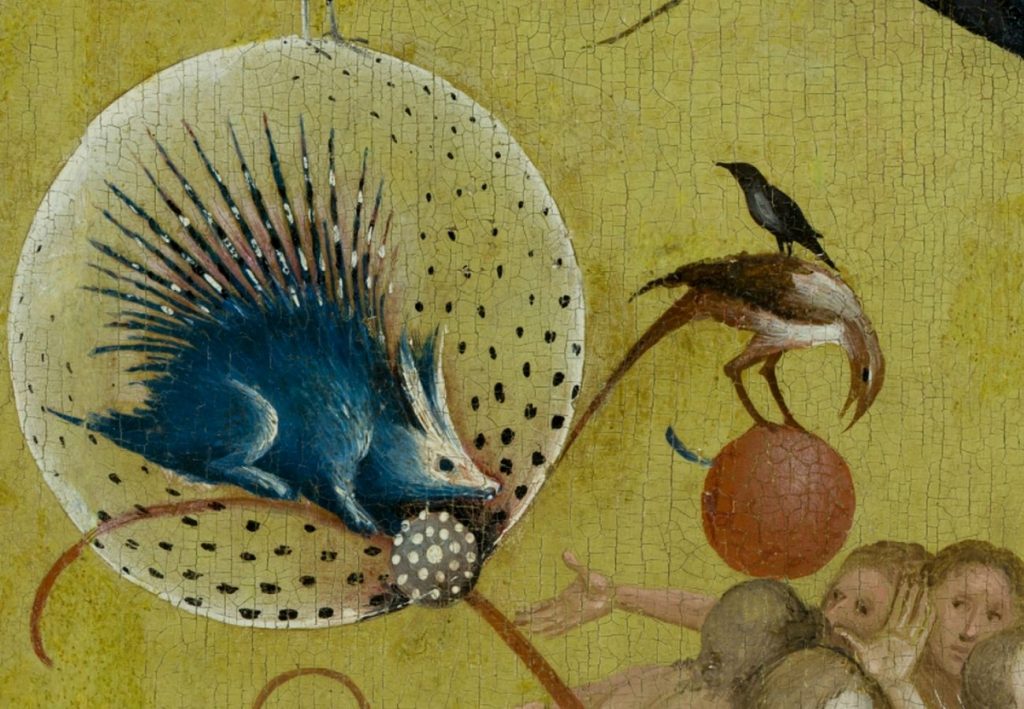
Pokémon & Bosch: Hieronymus Bosch, The Garden of Earthly Delights, 1490–1500, Museo Nacional del Prado, Madrid, Spain. Detail.
Piplup is a penguin-like Pokémon, who has a strong sense of self-pride. Because of its pride, it has a hard time accepting food from humans and bonding with its caretakers. It lives along the seashore in colder climates; that’s why the alter-ego of this Pokémon in Bosch’s painting is skating.
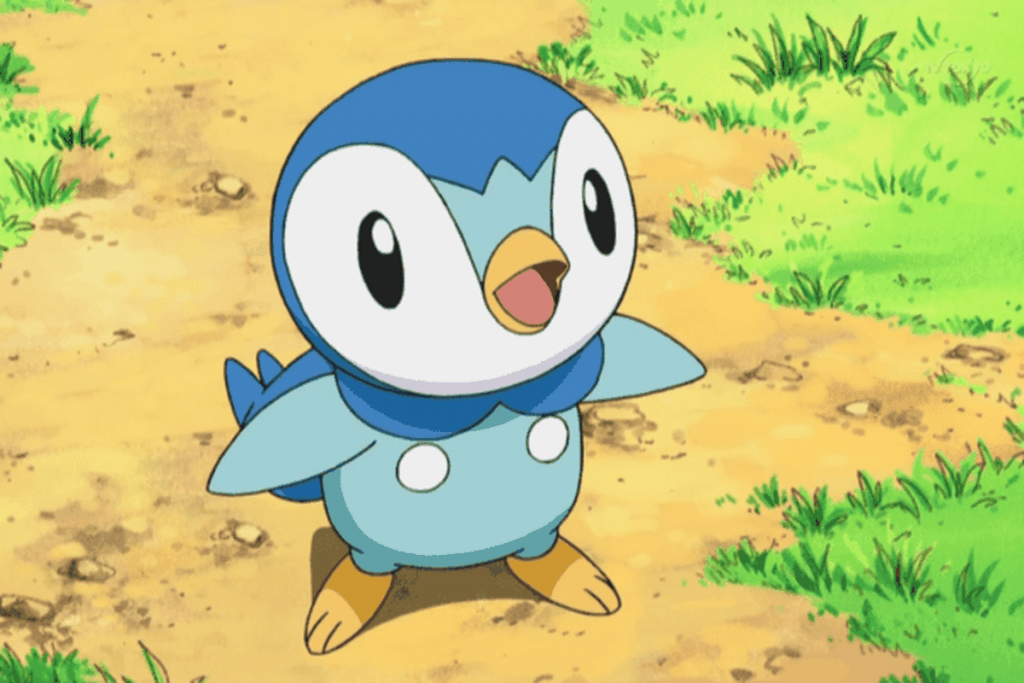
Piplup. RDS.
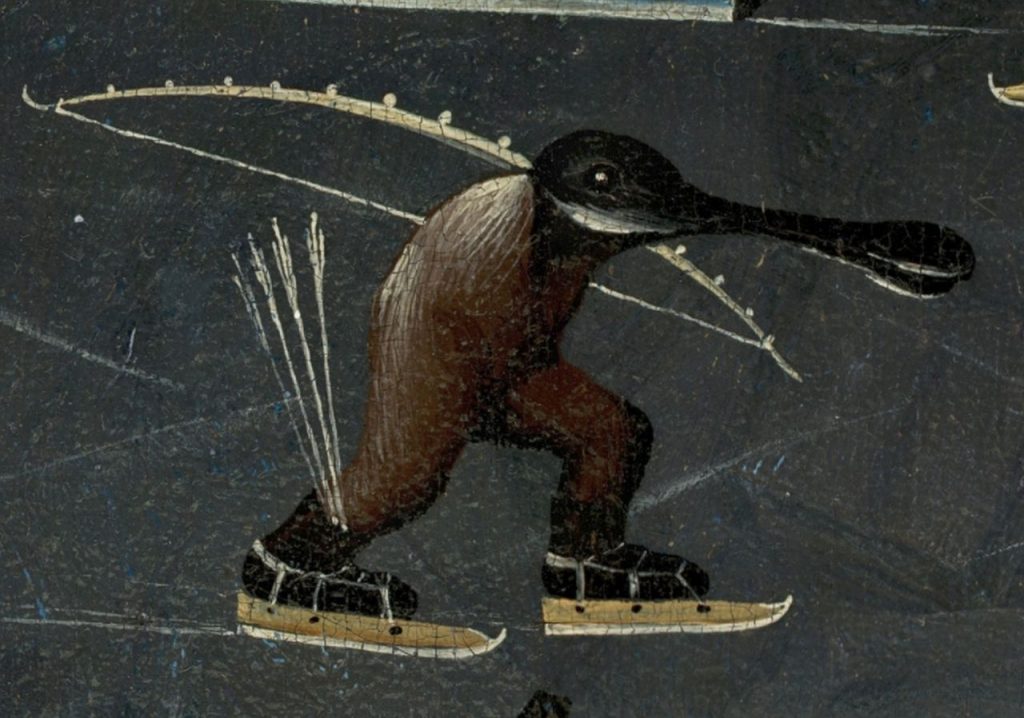
Pokémon & Bosch: Hieronymus Bosch, The Garden of Earthly Delights, 1490–1500, Museo Nacional del Prado, Madrid, Spain. Detail.
Mantine is a large, manta ray-like Pokémon. It can fly in the air if it builds up enough speed, in a similar manner to how real-life manta rays breach the surface, and can soar gracefully out of the water. Mantine is mostly docile. In the 16th century, its owner flew on its back with an owl on his head.

Mantine. Pokemon.
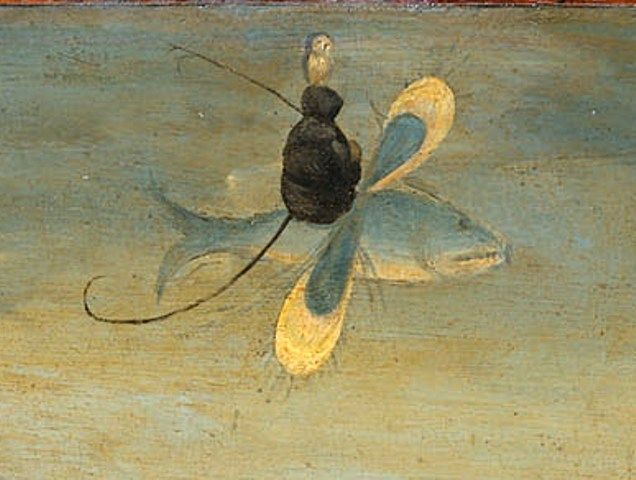
Pokémon & Bosch: Hieronymus Bosch, The Garden of Earthly Delights, 1490–1500, Museo Nacional del Prado, Madrid, Spain. Detail.
Psyduck is a Pokémon that resembles a duck or bipedal platypus. It is constantly stunned by its headache and is unable to think very clearly. This is why it sometimes eats random stuff, like frogs.
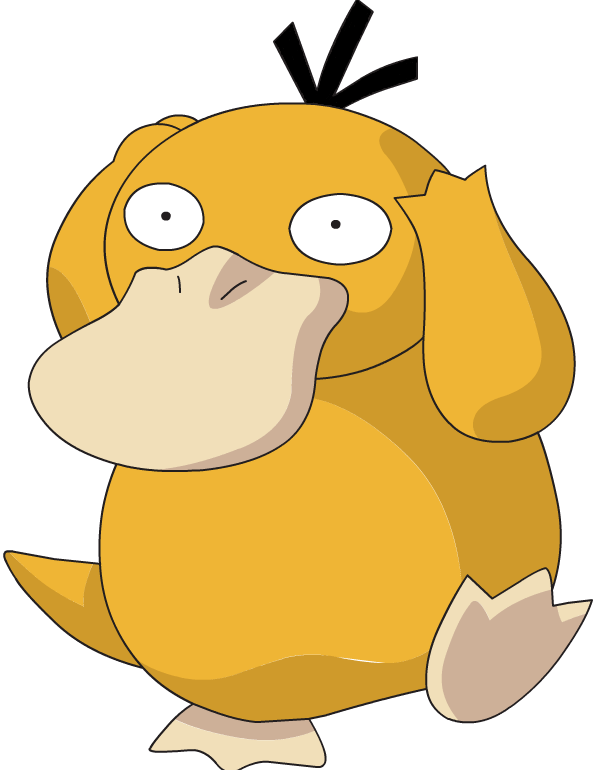
Psyduck. Shop7.
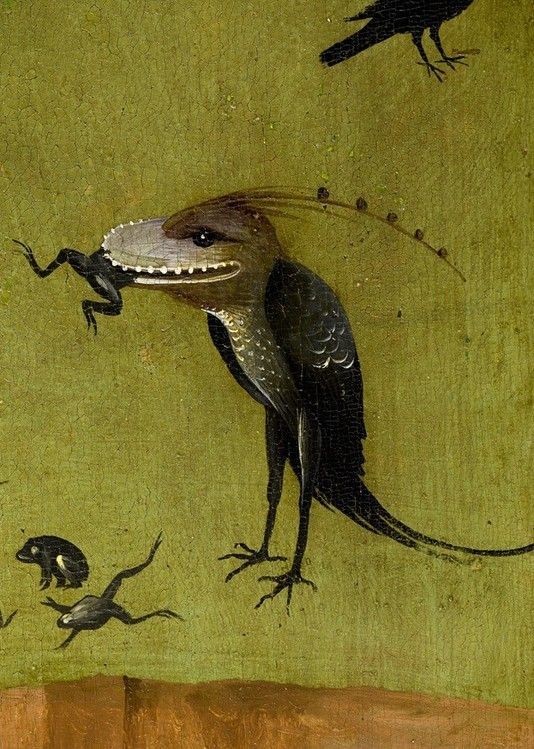
Pokémon & Bosch: Hieronymus Bosch, The Garden of Earthly Delights, 1490–1500, Museo Nacional del Prado, Madrid, Spain. Detail.
DailyArt Magazine needs your support. Every contribution, however big or small, is very valuable for our future. Thanks to it, we will be able to sustain and grow the Magazine. Thank you for your help!